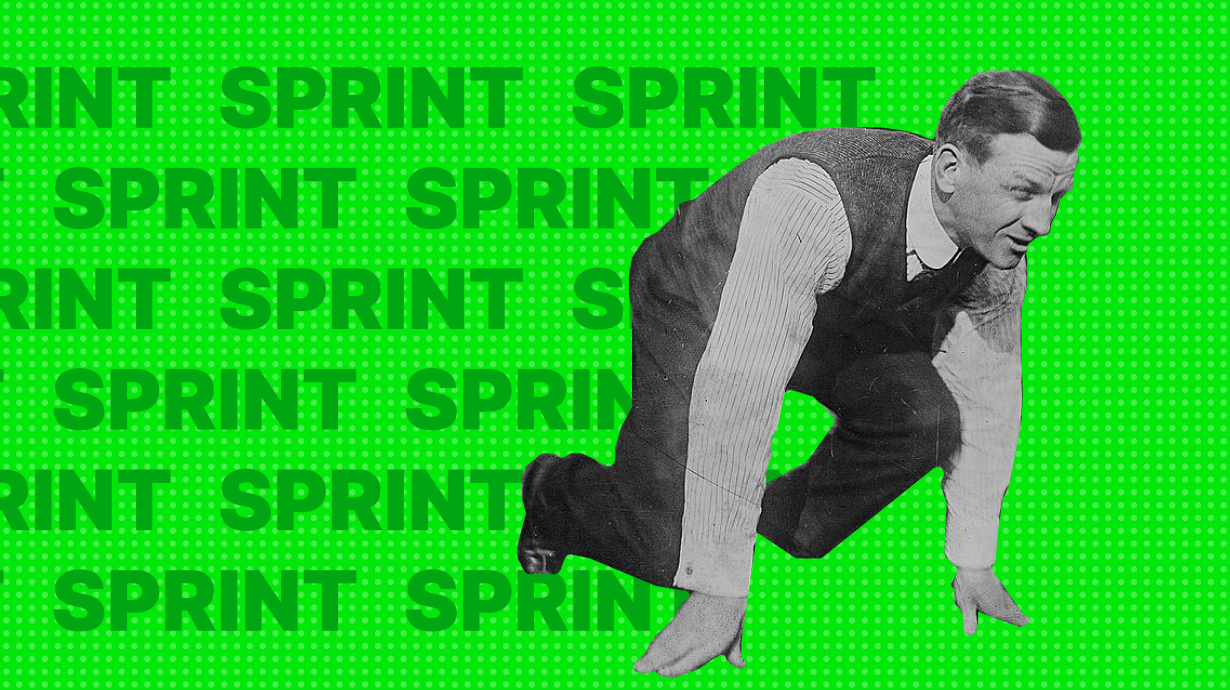What Is a Sprint and What Does Rugby Have to Do With It
📌 A sprint is a set time frame during which a team works to complete planned tasks. In Scrum, sprints typically last between one and four weeks.
The term “sprint” is widely recognized from sports like track and field, cycling, swimming, and skiing, where it refers to a quick race over a short distance.
This same concept of focused, intense work over a short period is applied to projects, regardless of the industry—whether it's IT, marketing, or construction. Scrum sprints drive teams to deliver results within a specific window of time.
Sprints are a core element of Scrum, differentiating it from other project management methodologies, and they fit within the broader Agile framework.
Interestingly, the word “scrum” also has its roots in sports, specifically rugby. It refers to the fast-paced contest for the ball after play has been halted—perhaps due to an injury or rule violation. Similarly, in project management, these short bursts of effort help move the team closer to achieving its goals.

Advantages of Sprints
✔️ They provide structure and help organize tasks over a defined time frame
✔️ Organizing a sprint requires breaking the project into tasks and subtasks, making it more manageable and less daunting
✔️ The team can reach goals more quickly because they have a clear understanding of what needs to be done and the timeframe for completing it
✔️ Adjustments are easy to implement. Since sprints are short, the team can quickly assess the results and plan the next one efficiently
✔️ The process is transparent—everyone is aware of the tasks at hand, which increases accountability and fosters team motivation
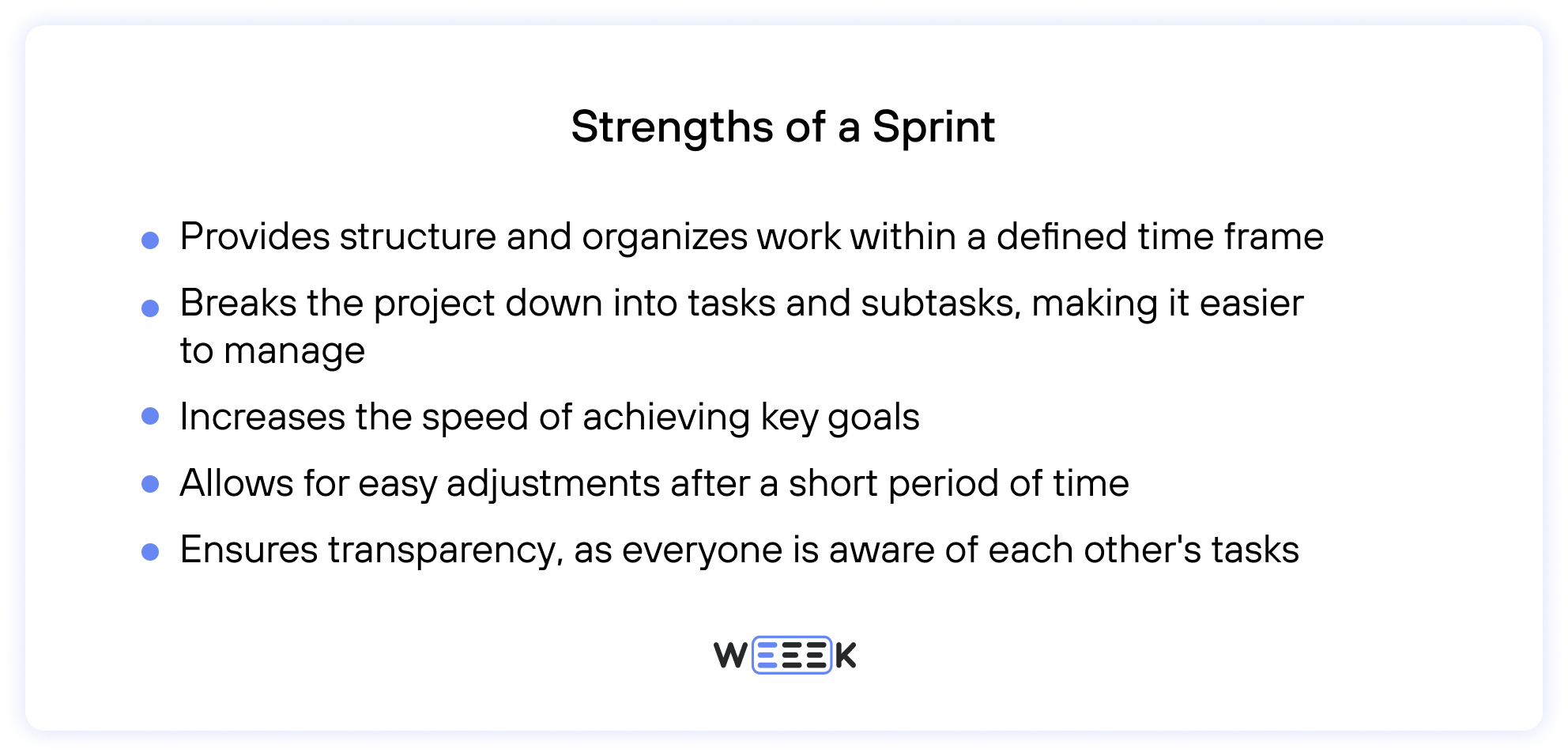
How Sprint Planning Works
Sprint planning takes place in a dedicated meeting with the product owner, Scrum master, team members, and sometimes external consultants or experts.
1️⃣ The product owner outlines the overall project goal and value, sets the main task for the sprint, and adjusts the technical requirements.
2️⃣ The Scrum master ensures deadlines are met and facilitates communication within the team and with the client. A successful sprint depends on a responsible and reliable Scrum master who manages the direction, timing, and resources.
3️⃣ The team shares insights on tasks, workload distribution, and any potential challenges.
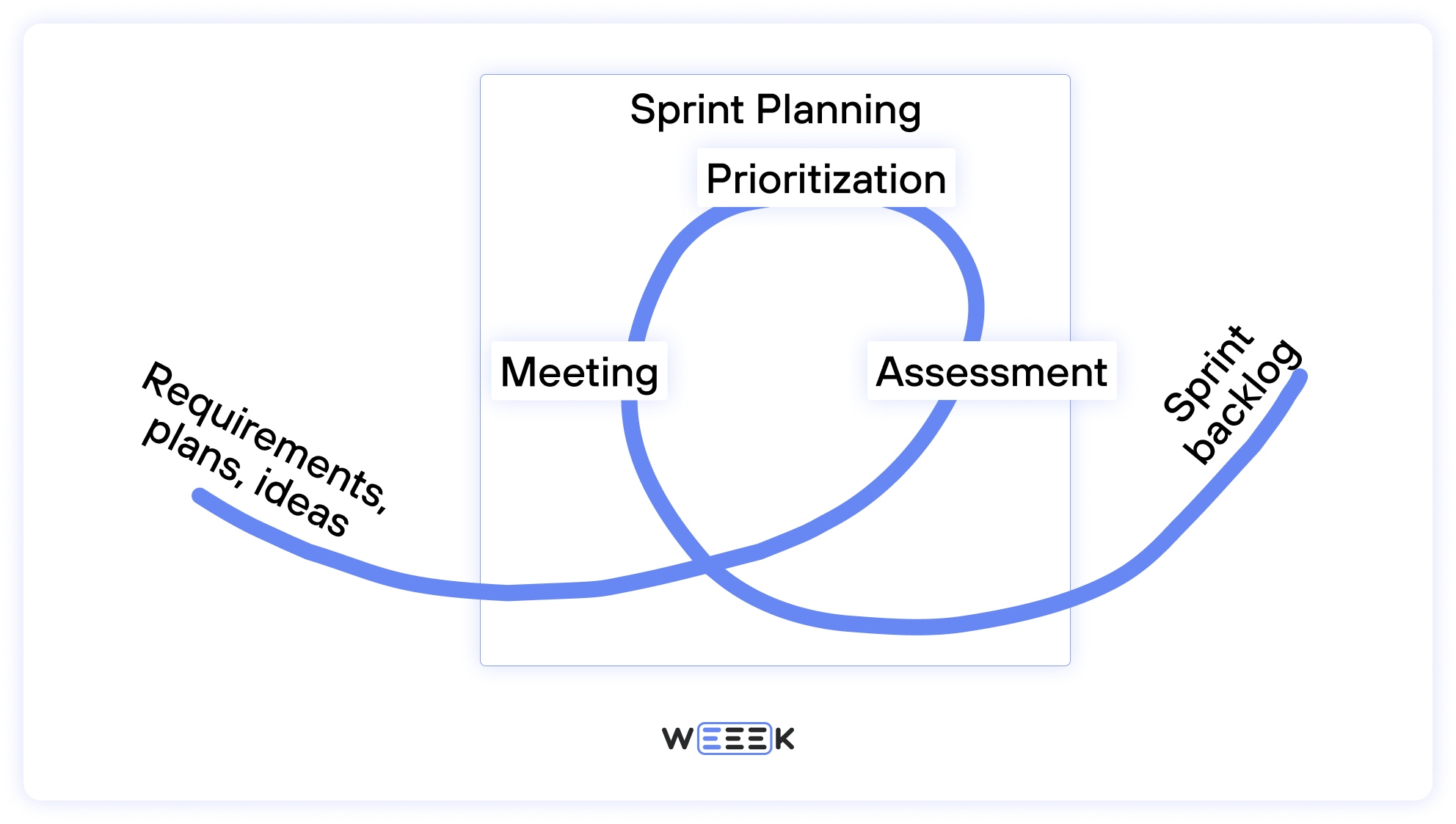
❗️ Sprint planning meetings should be kept concise. If they run too long, people can get lost in unnecessary details and lose focus. The meeting length depends on the sprint duration. Planning for a one-week sprint should take no more than two hours, while a four-week sprint may require up to eight hours. There’s no minimum time requirement for the meeting.
Other sprint-related meetings include:
✔️ Backlog refinement. An optional meeting with either the whole team or just the product owner and Scrum master.
✔️ Daily Scrum meetings (stand-up). Held each workday at the same time and lasting no more than 15 minutes. The team must attend, though the product owner may not. These meetings focus on current progress and any pressing issues.
✔️ Sprint review. Held at the end of the sprint to evaluate outcomes, gather feedback, and update the backlog.
✔️ Sprint retrospective. Conducted between the sprint review and the next planning session, this meeting allows the team to reflect on the sprint and discuss improvements for the next one.
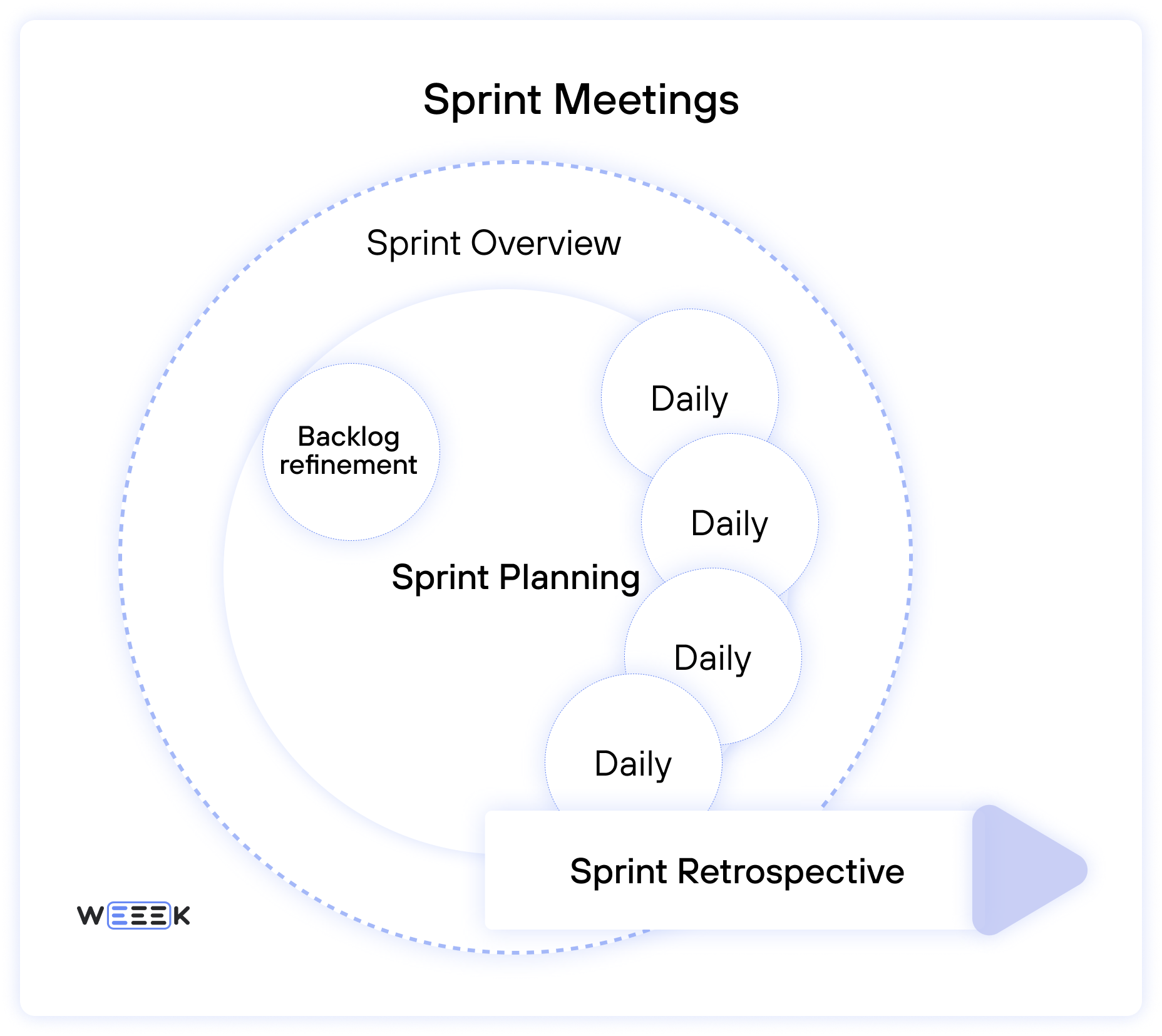
What Is Discussed at the Meeting
First question: What?
This question focuses on the tasks that need to be completed during the sprint. Typically, it's a set of features to be developed, especially in the case of a digital product.
The product owner decides what tasks should be moved from the product backlog to the sprint backlog, based on overall technical requirements and user feedback. The team then confirms what they can realistically achieve during the sprint.
To recap, the product backlog is a prioritized list of tasks and product requirements. From this list, the sprint backlog is created, containing short-term goals and tasks that need to be completed within the sprint.
The team identifies increments—step-by-step improvements to the product. Once a task from the backlog is fully developed and meets all requirements, it becomes an increment—a new feature of the product.
The time frame during which increments are released is called an iteration. Is it the same as a sprint? Yes, but while the term sprint emphasizes time and scheduling, iteration focuses more on the outcome and result.
Second question: How?
Here, the team discusses the resources needed to deliver the increment and complete the sprint.
In an efficient and supportive Scrum team, leaders listen to what the team can realistically accomplish during the sprint and avoid overloading the backlog with overly large or complex tasks.
The team evaluates the proposed tasks. Sprint planning techniques, such as planning poker, are often used for this—and you can have a bit of fun with the cards too!
Other methods like ICE, Value Efforts, and story mapping are also used to prioritize tasks. These help the team figure out which tasks are worth pursuing, how much effort they will take, and what will ultimately go into production.
Third question: Who?
During the meeting, all participants need to understand who is responsible for what in the upcoming sprint. Roles must be assigned, and tasks distributed accordingly. Simple!
Let’s take an example. We have a food delivery app for a small town, where big players like "QuickShop," "SpeedyDelivery," and "FastTrack" don’t operate.
This is an MVP app with a clean design, a product catalog from three local supermarkets, a shopping cart, and online payment. It works well, and the town’s residents like it.
Now it’s time to plan the next sprint to enhance the app. The team wants to add a delivery scheduling option and the ability to leave tips for couriers.
At the meeting, the product owner, Scrum master, designer, marketer, and developers gather.
Together, they break down the two major tasks into subtasks: updating the design, writing the code, setting up integrations, testing, and rolling out the update.
The team divides the work: Alex will design, John will write the code, Lisa will test, Sarah will handle the marketing announcement, and Scrum master David will ensure smooth communication.
The result of the sprint will be an updated version of the app: residents will now be able to schedule delivery times and leave tips for couriers.
Tools for Managing a Sprint
We looked into some of the best tools available to help you and your team plan a sprint, and we’ve chosen three that are particularly effective for this purpose.
WEEEK
WEEEK simplifies sprint management by allowing you to use boards within a single project. You can set up a "Product Backlog" board to collect all your plans for product development and improvements. From there, tasks can easily be dragged and dropped into the "Sprint Backlog" board.
To clarify tasks and provide additional details, WEEEK offers tags and custom fields. You can also set WIP (Work In Progress) limits in columns to control how many tasks go into active work at once. Subtasks help break down larger goals into more manageable steps.
Additionally, WEEEK allows you to set task dependencies, helping to organize the workflow and ensure that tasks are completed in the correct sequence.
As an added bonus, WEEEK has specialized sprint boards—a unique type of board where the sprint deadline is displayed right next to its title, keeping everyone on track.
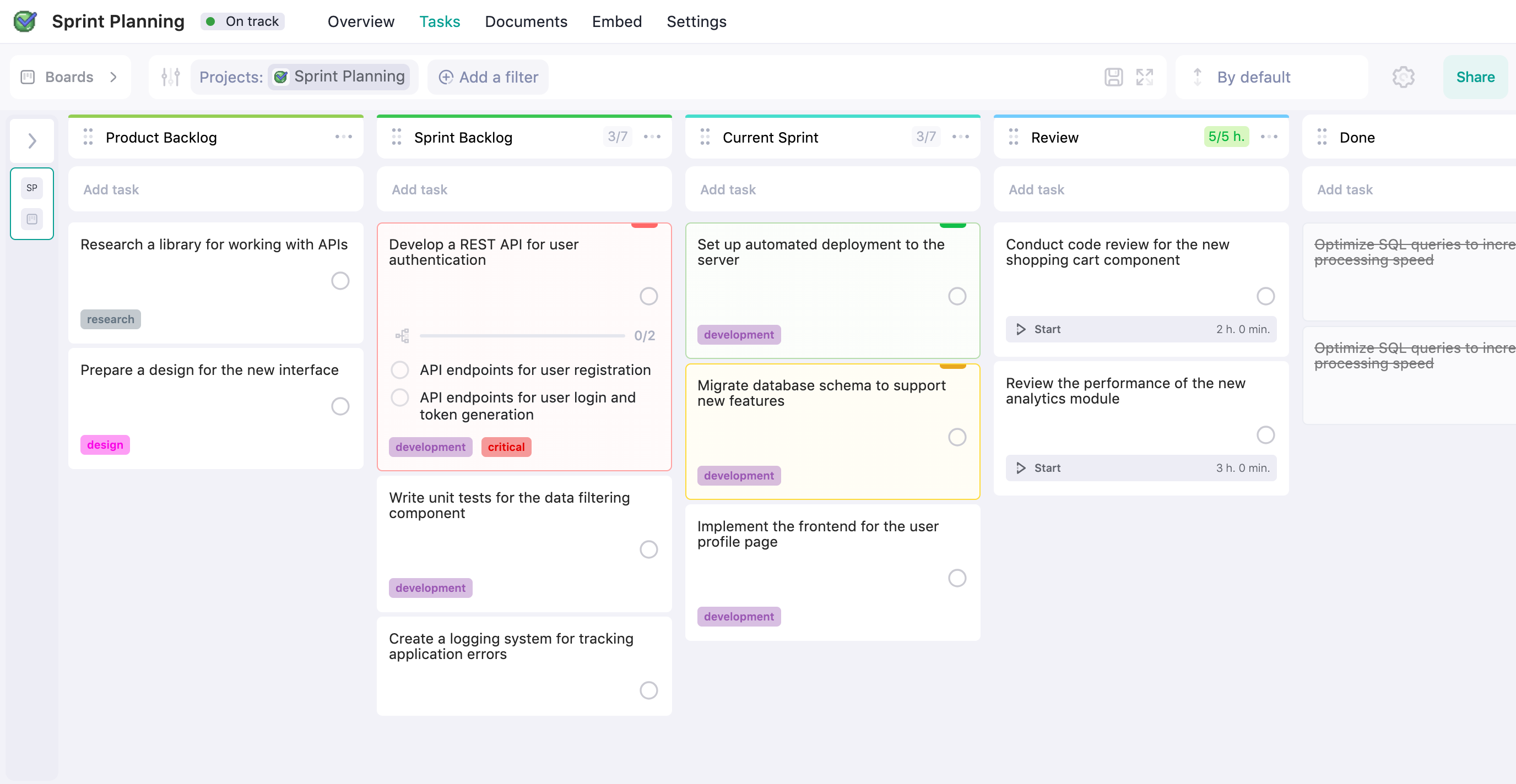
Trello
Trello is a popular tool for managing sprints, known for its simple and visual approach. You can create a "Product Backlog" board to house all your product development tasks and easily move them into a "Sprint Backlog" board.
Additionally, task dependencies can be managed through integrations or power-ups, ensuring tasks are completed in the right order.
A special feature in Trello is the "Calendar Power-Up," which allows you to visualize sprint deadlines and keep the team aligned on sprint timelines.sp

Jira
Jira is one of the most robust tools for sprint planning, specifically designed with Agile teams in mind. Its detailed issue tracking system allows for deep customization with fields, labels, and components to define tasks clearly.
Jira’s built-in dependency management helps ensure that tasks follow the correct sequence, preventing blockers from holding up the sprint’s progress.
One standout feature is Jira’s "Sprint Reports" and "Burn-down Charts," which provide real-time insights into the team's progress, helping keep the sprint on track and highlighting areas that need attention.

Recommendations for Effective Sprint Planning
☝🏻 Implement WIP limits to control the number of tasks your team is actively working on. This helps prevent the backlog from becoming overwhelming.
🗣 Conduct sprint retrospectives to reflect on the previous sprint. These sessions are essential for identifying what worked well, what didn’t, and how to improve. Encourage every team member to share their honest feedback on what helped or hindered progress and how the next sprint can be better.
📌 Pro tip for retrospectives. For a one-month sprint, the retrospective should last around three hours. Shorter sprints need shorter retrospectives. To keep the meetings fresh, try something fun like asking team members to name the sprint as if it were a movie, book, or historical event—adding a bit of creative flair.
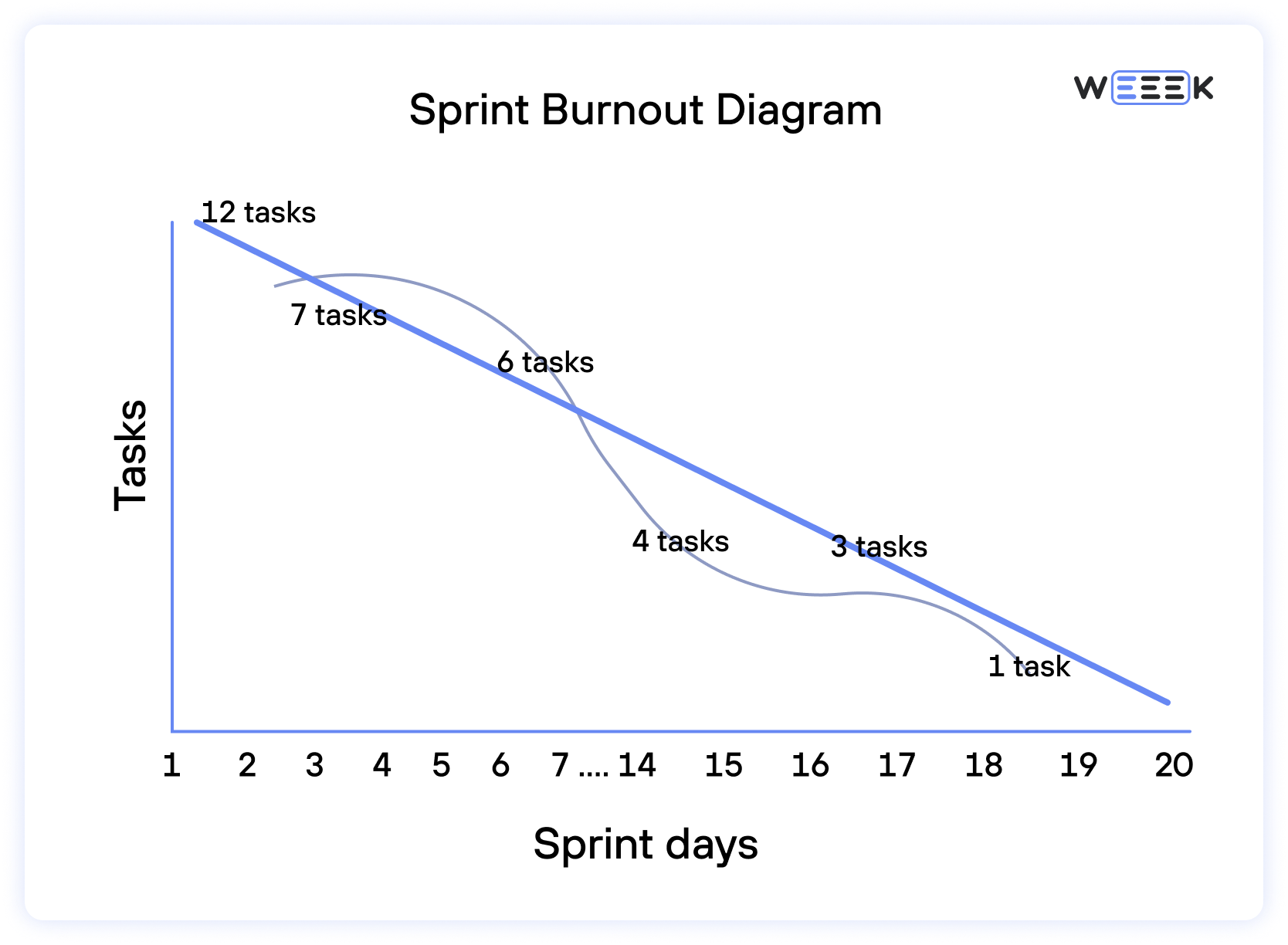
📈 Leverage metrics to track sprint progress and performance. The sprint burn-down chart is a key tool that visually shows the number of incomplete tasks versus the remaining time. The Y-axis tracks tasks, while the X-axis tracks days. Ideally, the line should slope downward smoothly. If it doesn’t by the midway point, it may be time to step up efforts and discuss it during the sprint retrospective.
🤗 Measure team satisfaction with each sprint. Ask team members to rate their satisfaction on a scale of 1 to 10, then calculate the average score. The project manager can discuss ways to achieve a perfect 10 for future sprints.
✋🏻 Lastly, be ready to adapt. Scrum, being part of Agile, emphasizes flexibility. Don’t expect everything to run perfectly on the first try—be open to changes and improvements as circumstances evolve.
Summary
✔️ Sprint planning is crucial for laying the groundwork for the team's tasks. The primary focus is on determining what needs to be done and the reasons behind it
✔️ All team members involved in product development should participate in the sprint planning session
✔️ By the end of the session, the team will have a clear sprint backlog
✔️ Basing the planning process on metrics from the previous sprint helps ensure a more informed and successful sprint ahead








